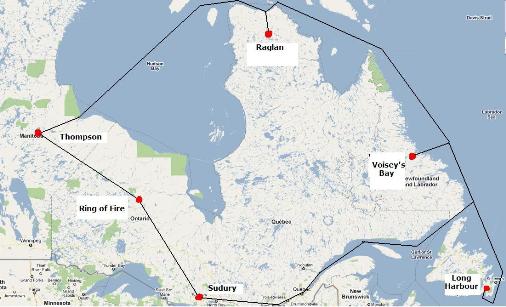For a large selection of corporate histories click: International Directory of Company Histories
Company History:
Noranda Inc. is one of the largest mining and metals companies in the world with operations in 18 countries. Production of copper and nickel accounts for the majority of Noranda’s revenues–the company also mines aluminum, zinc, and precious metals. Noranda restructured in the late 1990s by selling off its forest products and oil and gas businesses in order to focus on its core metals and mining assets.
Origins and Development: 1920s-50s
The history of Noranda begins with the story of a prospector named Edmund Horne, and a hunch. During the early 1920s, at a time when northern Canada was unchartered–the area was mostly wilderness, and prospectors preferred to stay on the familiar grounds of Ontario–Horne was drawn to the Rouyn district in northeastern Quebec. He visited Rouyn repeatedly, because he believed it “didn’t seem sensible that all the good geology should quit at the Ontario border!” Horne could reach Rouyn only by way of a chain of lakes and rivers.
His enthusiasm was contagious, and soon a group of 12 men had raised C$225 to finance further explorations. The effort paid off when word of Horne’s first strike made it to S.C. Thomson and H.W. Chadbourne, two United States mining engineers with a syndicate of investors interested in exploring Canadian mines. In February 1922, the syndicate bought an option on Horne’s mining claims in Ontario and Quebec and exercised it. Noranda Mines Ltd. was incorporated in 1922 to acquire the U.S. syndicate’s mining claims.























